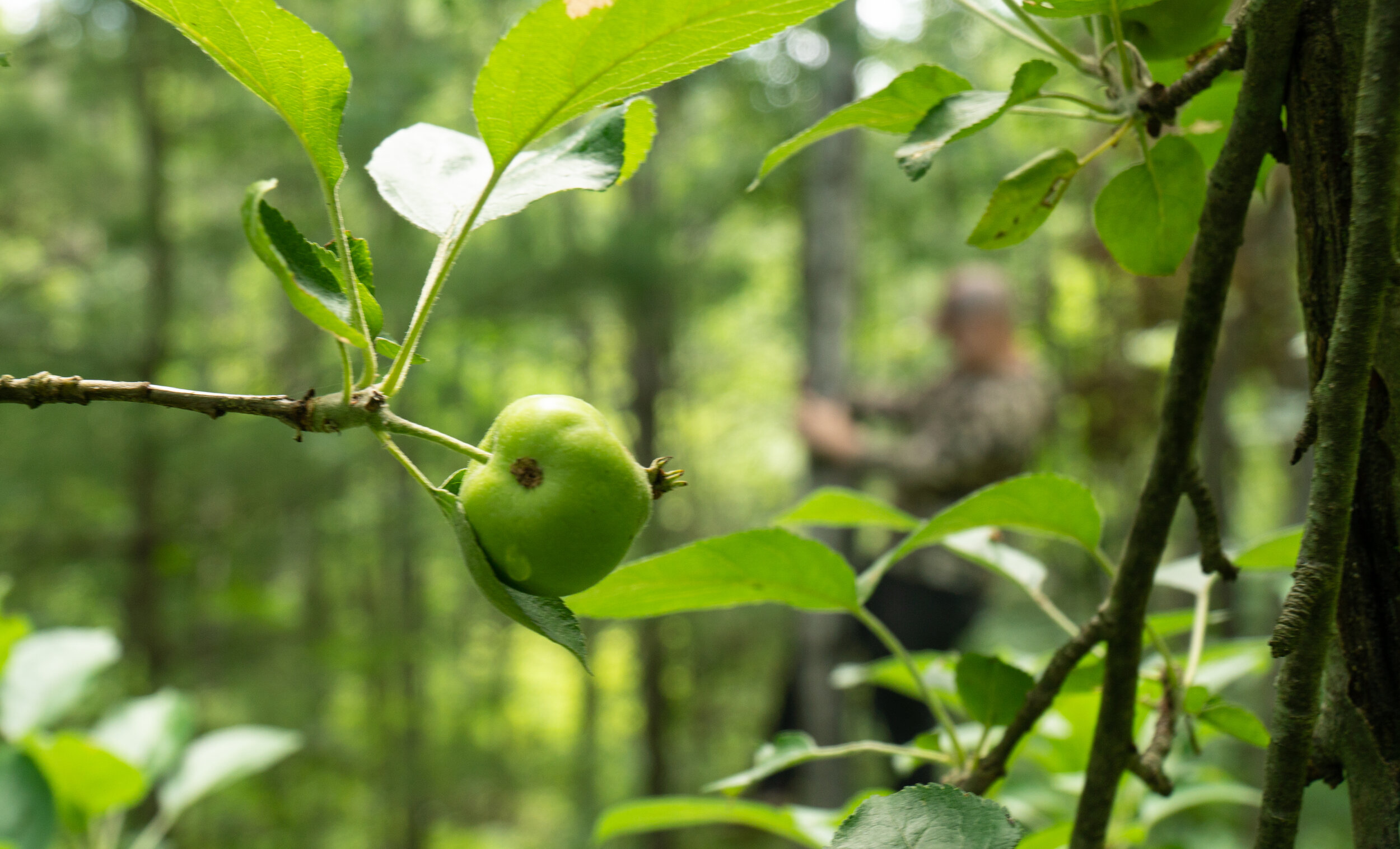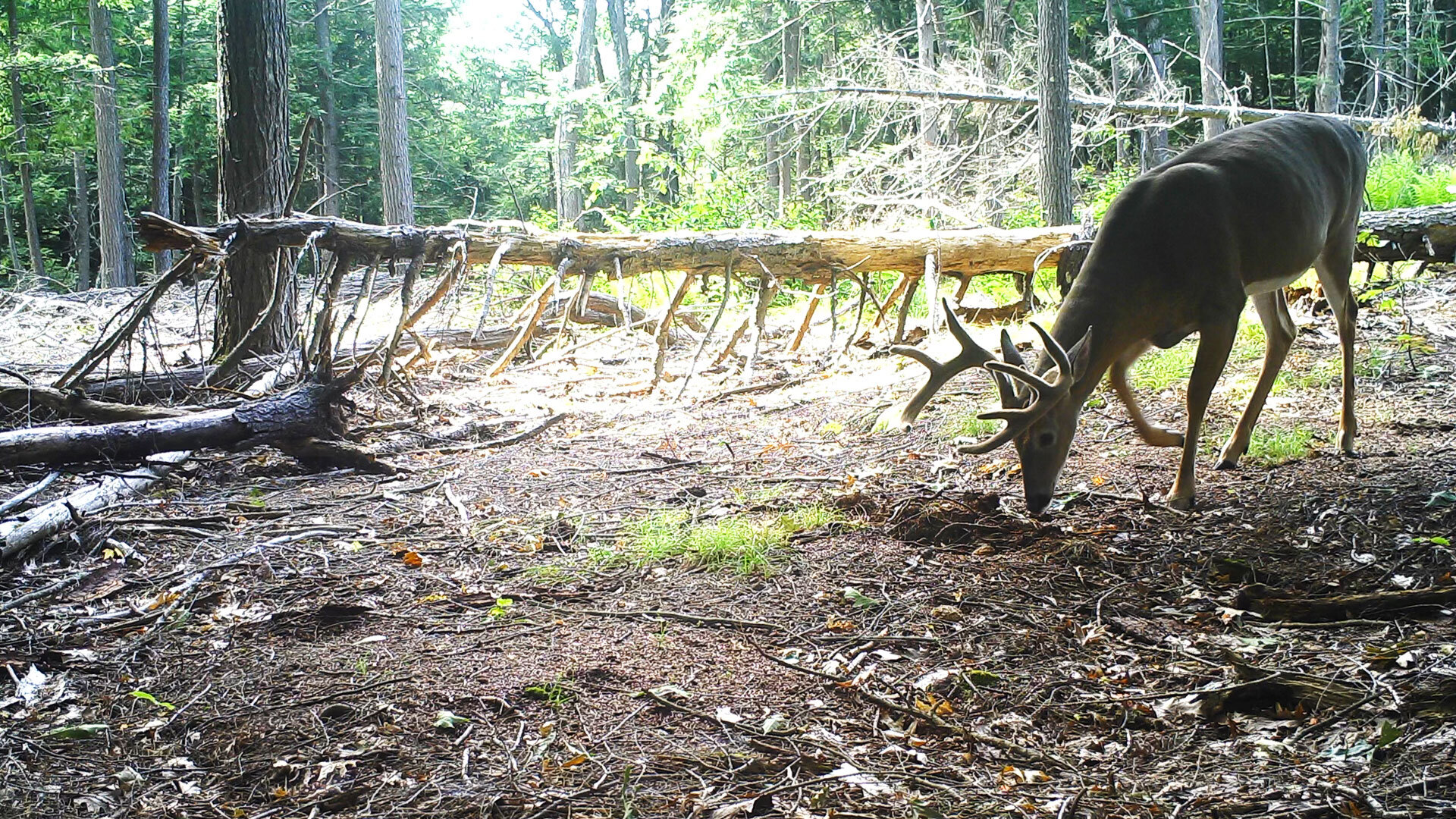Late summer and early fall is a time of big change in the whitetail woods. The days are shortening and the temperatures are cooling, food sources are shifting, and as velvet is shedding, bucks' testosterone is on the rise.
As hunters we need to shift our trail camera strategy from one that is summer pattern focused to one that will give us real time intel that could help us fill an early season tag.
2. FOCUS ON MAST – Undoubtedly the biggest single factor across the country to change a buck’s pattern in early fall is a new high quality food source, this typically comes in the form of a mast crop, both hard and soft. Acorn’s dominate most of the country in the early fall and are responsible for shifting more patterns than any other food source. Apples can also have the same effect. Learn what mast crops would shift patterns in your area and shift cameras to those food sources before the deer arrive. Running cameras on these food sources will give you valuable intel as to what bucks are using them and what time they arrive at these food sources, clueing you in on where they are bedding. A buck arriving in daylight or close to, it is bedded close, and a buck arriving well after dark is likely not bedding in the immediate area.
-
DON’T MOVE ANYTHING – Although the instances of this strategy working are in minority, some bucks depending on their personality and food sources will not change, or will only slightly shift their pattern from summer to early fall. If food sources are remaining consistent and you have an early opener (typically sometime in September) you may be able to capitalize on your summer trail camera locations and intel they provided. The earlier the opener, the better for this strategy. A September 1st opener is ideal. Typically a field of green soybeans, green clover or alfalfa, or a young cut will remain attractive from the summer into the early season and will keep bucks on the same pattern. SPOILER ALERT! A new mast crop food source coming on line during this period can spoil this strategy, think acorns, or apples for example. Be prepared for the shift if these mast crops are available to the deer.
3. NATURE’S FOOD PLOT – Areas of early succession growth and high quality browse, typical of clear or heavily cut areas, provide a high quality year round food source for whitetail. During the fall, young plants began to repine offering a high energy food source to deer. These browse change with the nutritional requirements of deer. These cuts are full of young digestible, high protein, green growth during the spring and summer months, then transition to high energy content browse in the early fall. Hanging cameras on the edges or just inside the timber from these cuts can identify where a deer is feeding in the evenings or at night and maybe give you the opportunity to intercept him in that cut or on the way to it. Once again this is less effective in areas with significant mast crops.
4. PINCH THEM DOWN – There is a good possibility that bucks are arriving at their destination food source after legal shooting hours. Once you have identified their preferred early season food source, study the area for any terrain or cover feature that will funnel or restrict movement between that food source and their perceived bedding. This could come in the form of a bench on a ridge or mountain, or a funnel between a pond and a steep incline. Run cameras in these pinches and you are likely to get flashes of daylight movement going to and coming from a destination food source. Don’t be afraid to run 2-3 cameras within a 100 yard area in these pinches. They are typically easy to get almost 100% coverage with just a few cameras. These are sometimes the very best places to hunt because these stand locations are low risk. The deer are just passing by and you can enter and exit these locations without bumping deer.
5.EARLY SEASON SCRAPES – Scrapes often conjure up thoughts of rutting bucks and hot does however they are used year round. If you can find a perfectly located scrape on a food source, bedding area, or travel route between the two you can kill a buck on that scrape in September. As testosterone begins to rise so does scraping activity. It is pretty typical for a buck to address a scrape first when he arrives at a food source in the evening, a bedding area in the morning, or on his travels to and from. If the scrape you’re looking for doesn’t exist, make your own. Deer are very quick to accept mock scrapes this time of year. They provide an excellent place to run a trail camera, and can be utilized to hunt over them.




